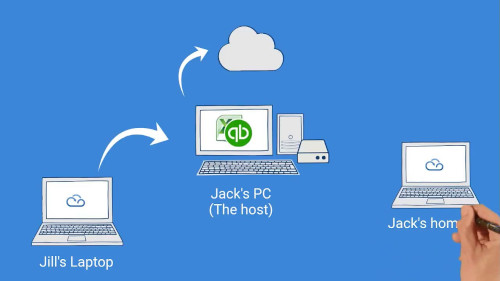The going green movement touches many parts of our lives. For SMBs, going green means taking responsibility for the environment starting from the computer room.
Over the past few years, the digital revolution has taken over almost every aspect of doing business.
While digital transformation has made work easier and increased efficiency, it has also contributed to a massive increase in energy consumption.
As a result, businesses across the globe are major contributors to environmental degradation.
We all want to live in a ‘Green’ environment. To achieve this, each and every facet of our society has to play its part in creating a sustainable environment.
Green computing was introduced to counteract the negative impacts of digital transformation.
What is Green Computing?
In simple terms, it is the eco-friendly and environmentally responsible use of computers. It involves designing, manufacturing, using, and disposing of computing devices in a way that their environmental impact is reduced.
Green Computing became prominent in 1992 when the EPA (Environmental Protection Agency) launched the Energy Star Program. Currently, computer manufactures and vendors are investing in designs that are energy-efficient, recycle-able, and with improved disposal.
4 approaches are being used to promote Green Computing.
- Green use: Using computers and their peripheral devices in an eco-friendly manner to reduce electricity consumption.
- Green disposal: Recycling, repurposing, or appropriately disposing of unwanted computing devices.
- Green design: It’s all about designing energy-efficient computers, printers, servers, and all the other digital devices.
- Green manufacturing: Here manufacturers concentrate on minimizing waste during developing computers and other digital devices. This ensures minimal environmental impact during manufacturing.
What are the ways green computing can be supported?
The goals can only be achieved when manufacturers, vendors, and users work together to comprehensively integrate green computing in their day to day lives.
These are some of the measures used to support green computing.
- Developing resource-saving applications.
- Ensuring that there is energy and resource reduction during hardware manufacturing.
- Practicing fair work conditions during production.
- Practicing energy-saving disposal and recycling.
- Using IT to reduce harmful emissions from other products.
How companies can implement green computing
- E-waste Recycling
Non-biodegradable materials cause some of the most detrimental effects on the environment. Recycling such products ensures you mitigate the effects of their disposal on the environment.
E-waste in our offices comprises of all digital devices that are no longer useful to the organization. These products can be as little as a mouse or as large as industrial printers.
Whenever the devices get damaged beyond repair or obsolete, they are often thrown away.
Digital devices are often made up of plastics and metals that are non-biodegradable. The good news is that most of these materials can be recycled.
As a result, you help reduce emissions produced from plastic production and you save our natural resources.
Both SMBs and large enterprises should look for an e-waste recycler to take care of all their digital waste.
- Only using products with the Energy Star label
Companies are always looking for ways to cut costs and sourcing for cheaper products is often a solution.
No one pays attention to environmental protection or energy-saving during the purchase. However, energy-saving devices last longer and they’re more sustainable in the environment.
Before buying office or remote working devices, look for the Energy Star Rating used to show the level of energy efficiency. Any IT infrastructure you want to set up for your workplace should have this rating.
- Working remotely
2020 has seen such a massive shift in the workplace. Yes, there was a 115% increase in the remote workforce between 2005 and 2017 but nothing like we’ve seen in 2020.
According to the Global Analytics Report 2017, working remotely takes about 600,000 cars off the road annually. As a result, the amount of greenhouse gas emissions caused by daily commutes is significantly reduced.
Actually, the study evidenced that there will be a reduction of 54 million tons of emissions in the U.S if all telecommuters worked from home for at least 3 days. Amazing, right?
The good news is that the remote working trend is here to stay as most companies have realized how important it is for business sustainability.
Also, home offices use less space and resources minimizing energy consumption.
- Using cloud computing
One of the benefits of green computing is ensuring that businesses can do the biggest chunks of work using the least possible energy. And this is where green cloud computing comes in.
Green cloud computing is taking advantage of cloud technologies to do more work but with less amount of energy. To get a better grasp of the concept, we have to first look at how work was done before the cloud.
People had to go to an office to access their computers with specific RAMs, processing speed, and storage for them to work. Whether you utilized all the resources or apps on the machine power had to be consumed.
Additionally, all computers have to be hooked to an on-site data center with bulky computer systems that would consume so much power to run.
In walks cloud computing.
With this, businesses have access to technologies like remote desktop and remote access. Employees can access all company data and systems using their personal computers, phones, and tablets.
There is no need for a physical data center as company data is stored on a server in the cloud. There is more work done with minimal resource utilization.
Conclusion
Are you ready to take the first step towards creating a greener tomorrow?
MyQuickCloud provides SMBs with remote working and cloud computing solutions that help your business go green. You’ll save resources by simplifying your IT infrastructure and centralizing all business data and systems. As a result, you improve your efficiencies while reducing costs.
Awareness and willingness to create a better tomorrow is the first step.





